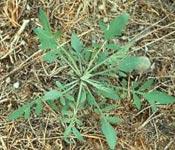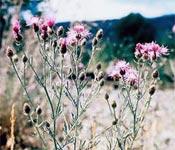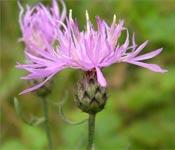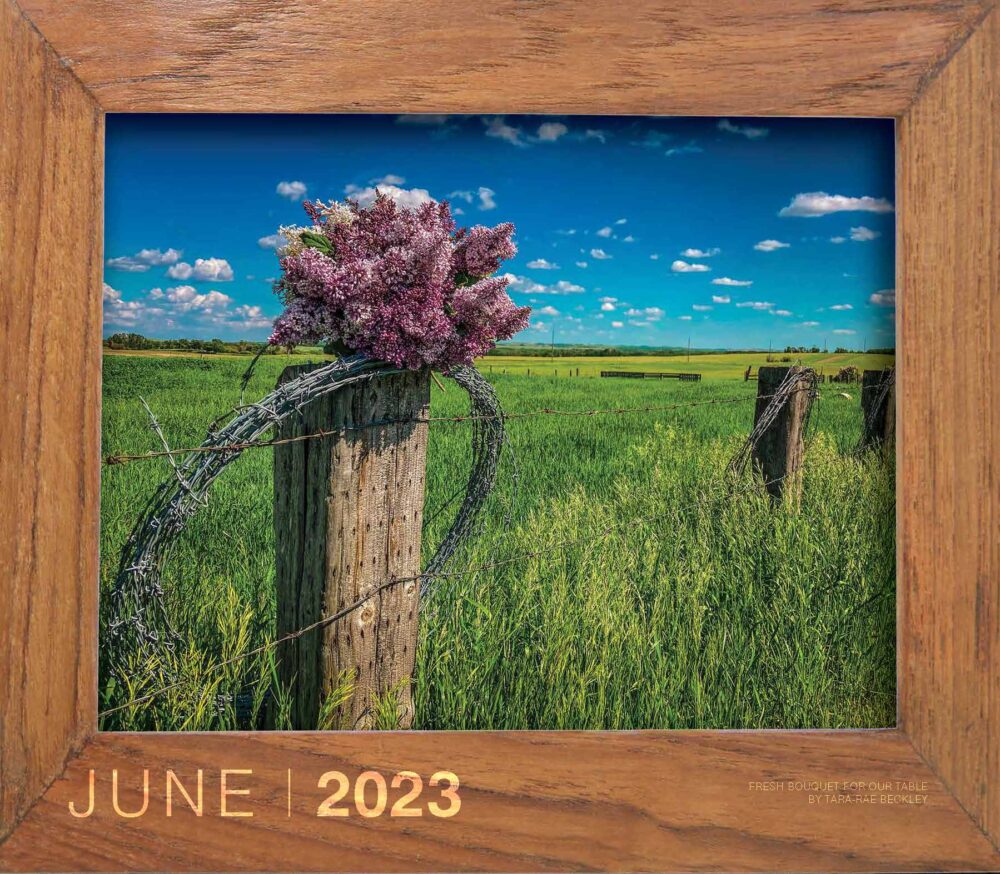Family – Sunflower Asteraceae
Similar Species – Yellow star-thistle Centaurea solstitialis
Life Cycle – biennial, simple perennial
Habitat – forage crops, hay fields, rangeland, roadsides, waste areas
Key Features
- Deeply lobed, “cobwebby” basal leaves
- Generally purple flowers
- Oval bracts with a black-tipped fringe
Seedling
Cotyledons are oval with short stalks. The first true leaves are spoon-shaped with entire to wavy-edged margins.
Juvenile
Spotted knapweed forms a large tap root and rosette of leaves that are deeply divided into narrow segments. The leaves of its close relative, diffuse knapweed, are much more finely divided by comparison. In both species, the early leaves are covered with a thin layer of matted, wooly hair resembling a cobweb. Spotted knapweed produces erect, hairy stems that are typically less branched than diffuse knapweed. The upper stem leaves are almost linear. Both knapweeds contain a bitter-tasting chemical that makes them highly unpalatable, although not poisonous. They have taken over vast areas of rangeland in the interior of British Columbia and have greatly reduced the availability of desired forage.
Mature
Ovate heads are produced in clusters at the top of the plant. The tiny flowers are pink to purple, rarely white. From a distance, spotted knapweed looks a little like Canada thistle. The flowers are surrounded by oval bracts with a black-tipped fringe resembling a falsh eyelash. The involucral bracts of diffuse knapweed, on the other hand, are triangular and spine-tipped. Another knapweed species, yellow star-thistle, has bracts that are modified into narrow, sharp spines. Spotted knapweed seeds are narrowly oval, brown and have a “crown” of stiff bristles.
 |
 |
 |
